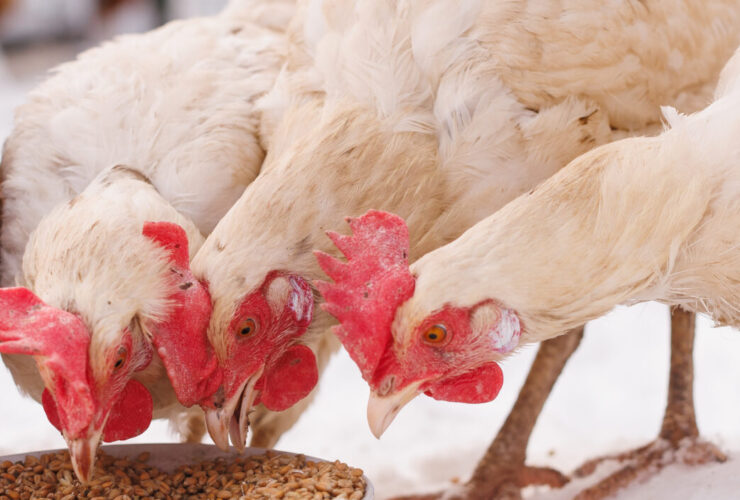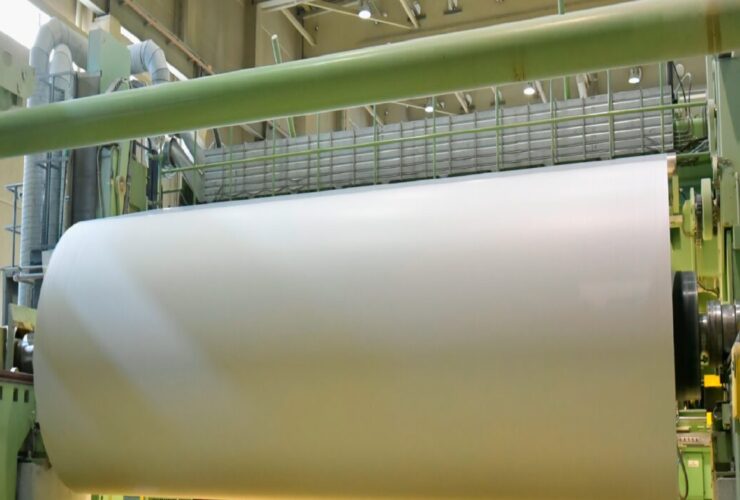Ammonia Reduction in Aquaculture using Probiotics Formulation
INTRODUCTION
Probiotics have been defined as live microbial feed supplements which beneficially effect the host animal by improving its intestinal microbial balance.
Tex Pro 3C is a probiotic additive consisting of a unique strains of Bacillus clausii along with Bacillus subtilis and Bacillus licheniformis.
DESCRIPTION OF TEX PRO 3C
TEX PRO 3C is a novel mix of three spore forming probiotics which increases the growth rate by producing vitamins to improve digestion and enhances weight gain of fish. During the growth of fish, the unused feeds are converted into ammonia which increases its concentration in water. The fish excretes waste material, which in turn increases the level of ammonia in water. Increase in ammonia level would make the environment toxic for fish and other aquatic animals to survive. The amount of ammonia in the water has to be controlled or balanced to provide a healthy environment for growing fish. TEX PRO 3 C is an effective powder formulation which contains probiotics and efficient bacteria which have the capacity to reduce ammonia formed from fish excreta and feed waste. The powder is formulated with three bacteria which produce ammonium oxidase, nitrite oxidase and nitrate reductase enzymes, which efficiently reduce the amount of ammonia, nitrite and nitrate in water. This reduction balances the water quality and helps the fish to grow with increased weight and resistant to various diseases.
OBJECTIVE
In the present study, we estimated the level of ammonia produced and reduced during the growth of GIFT Tilapia when treated with TEX PRO 3 C in 700 L of water in 265.7 gallon tank. Fish used for the experiment ranged from fingerling stage (1 to 2 grams) to Juvenile stage (20 to 100 grams). All the four groups were treated with and without ammonia (UREA) and the effect of TEX PRO 3 C on ammonia reduction were observed, to study the effect of the formulation. The Tilapia fish (Oreochromis niloticus) was also observed for the growth using various parameters during the treatment, to study the effect of formulation on growth and development
MATERIALS AND METHODS
Water tank with a capacity of 264.172 Gallon was used in the study to grow the fish. The tanks were filled with 700 L of water. Tilapia fingerlings of size 4 to 5 cm (1-2 Inch) approximately with weight of each fish ranging from 1.2 to 2 g were obtained from Tamilnadu J. Jayalalitha Fisheries University (TNJFU) – Barur center for sustainable aquaculture, Krishnagiri. Both male and female fingerlings were used for the study. On arrival the fingerlings were acclimatized for 2 weeks and after a stipulated time, fifty fish were transferred into each tank and dosed with TEX PRO 3 C as per the table 1 below.
TEX PRO 3C-Treatment Design

Table1: Experimental design for treatment
The fingerlings were fed with floating commercial feed of 0.8mm with 0.002g (approx). Each tank was supplied with an aeration of 5mg/L. The level of dissolved oxygen was maintained at 5 to 8 mg/L. Optimum temperature ranged from 27 ◦C to 30 ◦C and pH between 7 to 8. Dosing was carried out as above Table 1 with TEX PRO 3 C dosed at a concentration of 0.035g /700L of water in tank which corresponds to 834g /1 Hectare of pond. The challenged group contains 10 Kg of Urea /1 Hectare dosed at a concentration of 4mg/L (2.8 g/700 L). Along with Urea, 25 Kg of Calcium phosphate /1 Hectare was dosed at a concentration of 9.8 mg/L- 6.9g/700 L.
Measurements
The water samples were estimated for level of Ammonia, Nitrite and Nitrate using API Master Test kit- Mars Fish care and analyzed further by Berthelot method and Griess method. Growth of the fingerlings were measured using the below formulae for Survival rate (SR), Absolute growth rate (AGR), Specific growth rate (SGR), Relative growth rate (RGR), Feed conversion ratio (FCR), Feed conversion efficiency (FCE) and Condition factor (CF)
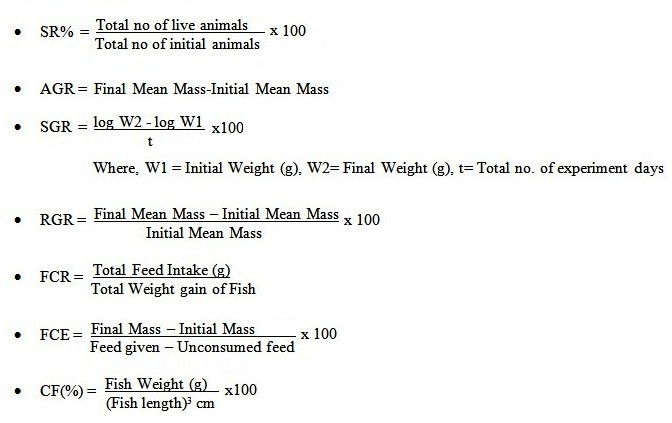
The dissolved oxygen, turbidity, pH and hardness of the water were measured everyday during the study. Statistical analyses were carried out between the various treatment groups and within the samples by using the software Graph Pad Prism 9.4.1 – one way ANOVA to determine the significant variation between the treatment groups. The mean comparison was carried out by Tukey’s test and significance difference taken at P < 0.05.
RESULTS AND DISCUSSION
Efficiency of TEX PRO 3C in reducing ammonia
The water treated with TEX PRO 3C showed a good response in controlling water quality and environment for the fingerlings to grow at a rapid rate.
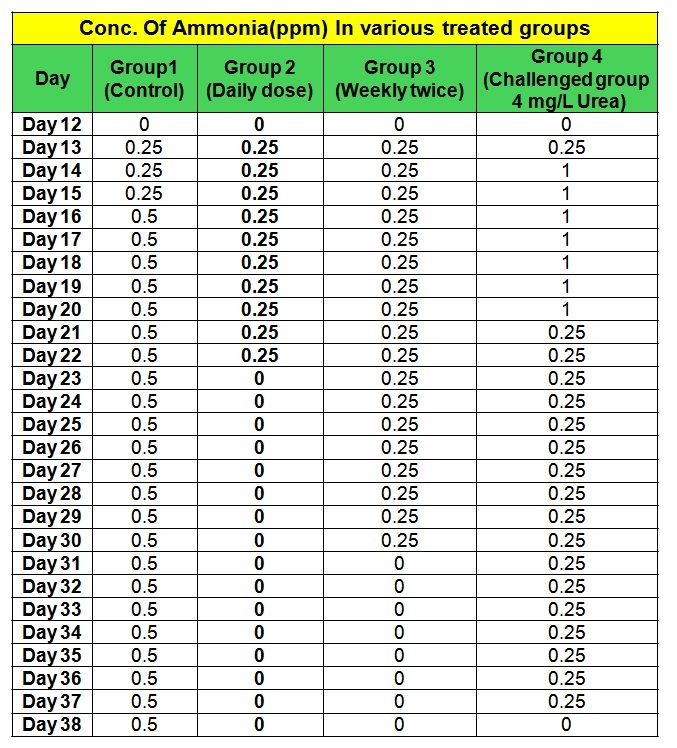
Table 2: Efficiency of TEX PRO 3C in reducing Ammonia in various groups
The formulation had an increased effect in reducing the level of Ammonia, nitrite and nitrate which was generated during feed accumulation and fish waste. The challenged group containing urea was also efficiently reduced by TEX PRO 3 C. All the groups treated with TEX PRO 3 C showed efficient reduction in ammonia, nitrite and nitrate. Daily dosed group was effective when compared with other treatment groups. Ammonia level was significantly reduced when treated with TEX PRO 3C and presented in the Table 1 & Graph

Graph 1: Efficiency of TEX PRO 3C in reducing Ammonia in various groups.
Reduction of Nitrites and Nitrates on Treatment with TEXPRO 3C
The Nitrites and nitrates formed during the nitrogen cycle upon the breakdown of ammonia by TEX PRO 3 C were further reduced to nitrogen and oxygen. The bacterium in the formulation produces nitrite oxidase and nitrate reductase which actively helps in the conversion of nitrites and nitrates into simple elemental forms. The data of all groups were recorded every day.
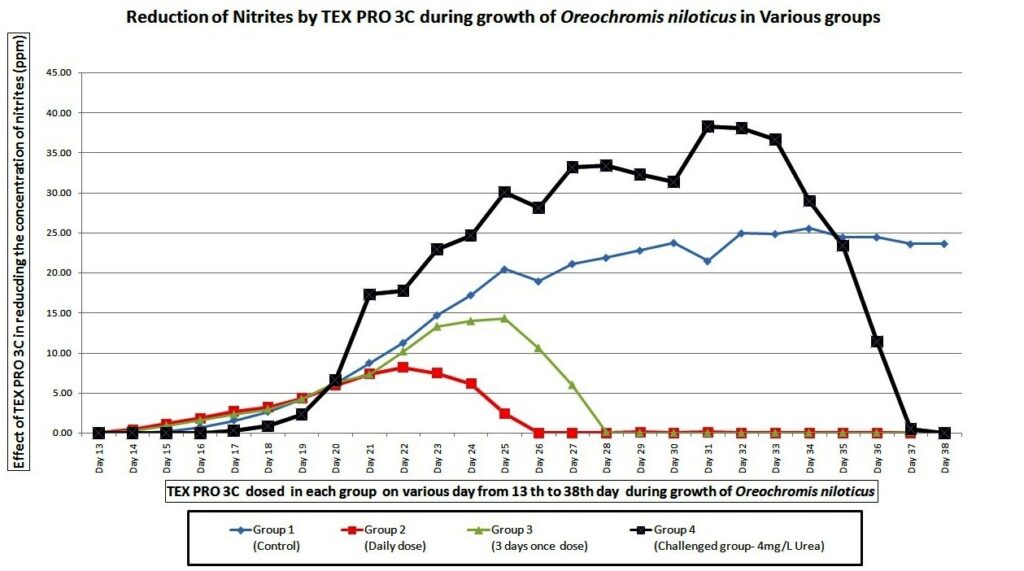
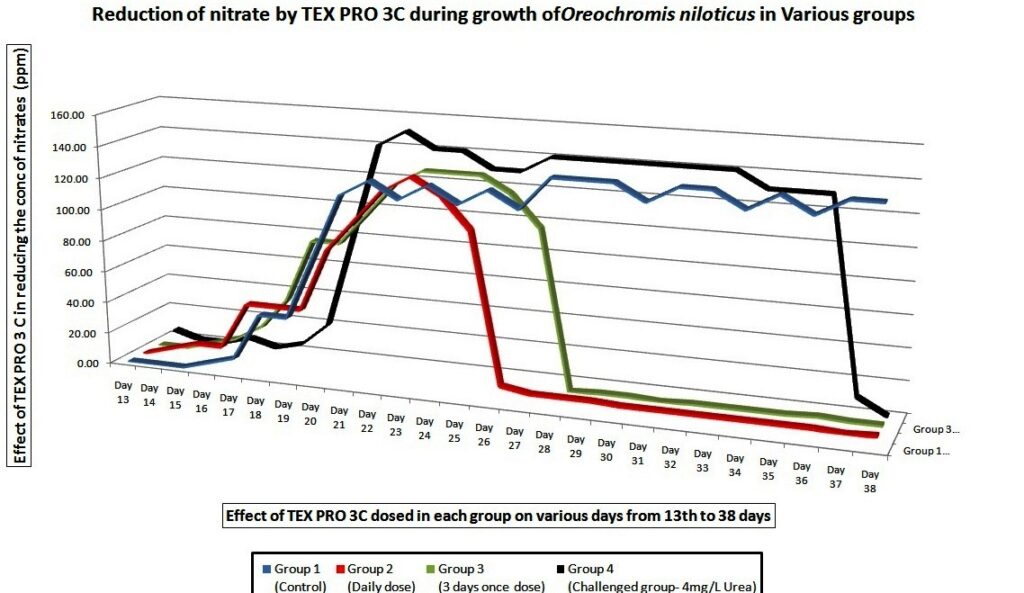
Graph 3: Effect of TEX PRO 3C in reducing nitrates formed during growth of Tilapia fish
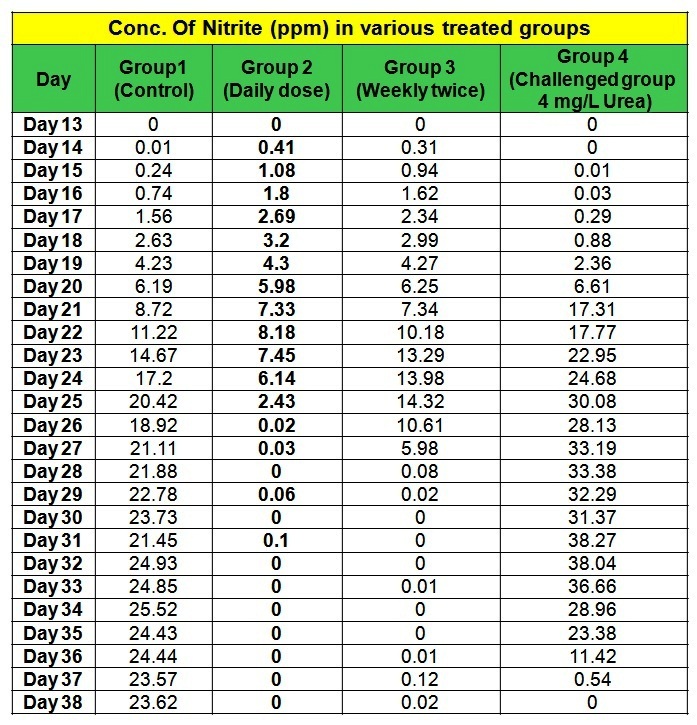
Table 3. Effect of TEX PRO 3C in reducing nitrites formed during growth of Tilapia fishes
The results of the recorded data are tabulated in Table 3 & 4 and graphically presented on Graph 2 & 3. The graphs clearly show the ability and effectiveness of the product to balance nitrogen cycle in water for enhancing the growth of the fingerlings and fish. Daily dosing of water with TEX PRO 3C proved effective in controlling nitrogen cycle in water and enhance growth and development of fish compared to other treatment groups.
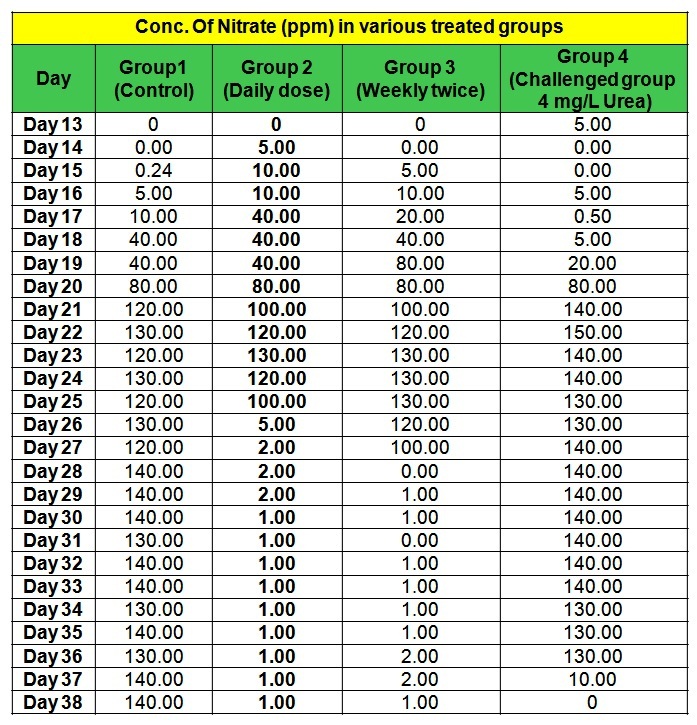
Table 4.Effect of TEX PRO 3C in reducing nitrates formed during growth of Tilapia fishes
Chemical parameters of water monitored during the study
The chemical parameters of water during the growth of fingerlings were tested and recorded daily. The results of DO, pH, turbidity and hardness were tabulated in Table 5. The quality of water was similar to control group indicating that the usage of TEX PRO 3C does not cause any adverse change to the water quality in treated groups compared to control group. Statistical analysis was carried out by ANOVA-one way.

Table 5: Statistical analysis of chemical parameters of various groups by ANOVA – one way
Growth rate and development of Oreochromis niloticus on TEX PRO 3C dosing
The growth parameters were measured across all treatment groups to study the effect of TEX PRO 3 C in enhancing growth and development of fish. The data are tabulated in Table 6. The group which received daily dosing of TEX PRO 3C showed better growth rate when compared with control and other treated groups.

Table 6: Statistical analysis of growth parameters of Fishes by ANOVA-one way
*Data are expressed as Mean ± standard error of Mean (n=50)
SR – Highest survival rate of 82 ± 0.05 was seen in group 2 compared to other groups indicating that TEX PRO3C contains probiotics which enhanced growth of fish by improving intestinal microbial balance and reducing pathogenic flora by increasing food absorption.
AGR – Absolute growth rate of 16.63 ± 1.5 indicates that the weight gain of fingerlings in group 2 is higher compared to other groups proving nutritional quality of the formulated TEX PRO 3C.
SGR – Highest specific growth rate of 3.31 ± 0.07 in group 2 indicates that the TEX PRO 3C fulfilled the dietary requirement of fish to grow faster.
RGR – Highest relative growth rate of 658.73 ± 36.01 was seen in group 2, respective to the size of the population compared to other groups.
FCR & FCE – Feed conversion ratio (FCR) and feed conversion efficiency (FCE) is interrelated, if FCR value decreases then the FCE value increases. In the present study, group 2 showed low FCR value and high FCE value compared to other groups. Lower FCR values of *0.46 ± 1.51 and higher FCE value of
215.47 ± 19.50 indicates greater efficiency of feed utilization.
CF – The health status of fish of all the groups was determined by condition factor (CF) of feeding activity and group 2 showed highest CF (2.18 ± 0.04) compared to other groups.
Statistical analysis results clearly show that all the growth parameters of group 2 are higher than other treated groups. The growth and nutrient utilization determines the production and productivity of fish. After completion of 26 days of TEX PRO 3C study, the weight gain of the fingerlings were increased significantly (P < 0.05) in group 2 compared to other treated groups. Group 2 has significantly higher AGR, SGR, RGR, FCE and CF and low FCR. The lowest values of all parameters were observed in control group which was not treated with TEX PRO 3C.
CONCLUSION
Total ammonia nitrogen, the critical factor in aquaculture systems, as it accumulates in the system as a by-product of feed and animal excretion and it has direct effect on the health of aquatic animals. The data clearly shows that the product TEX PRO 3Cis efficient in removing ammonia formed during unused fish feed and waste and balances the nitrogen cycle. The probiotics fed fishes showed increase in growth by
improving digestive activity producing vitamins, enhance enzyme activity which in turn improves digestibility and weight gain. The data clearly shows that Group 2 which was dosed daily with TEX PRO 3C significantly showed increase in growth of fingerlings. The quality of water did not show much drastic variation compared to control. So we conclude that using TEXPRO 3C daily or weekly twice is effective in reducing ammonia and also balance good nitrogen cycle in ponds for grow than development of fishes in aquaculture.
For more details or trade inquiries on the product, please contact us at info@texbiosciences.com

